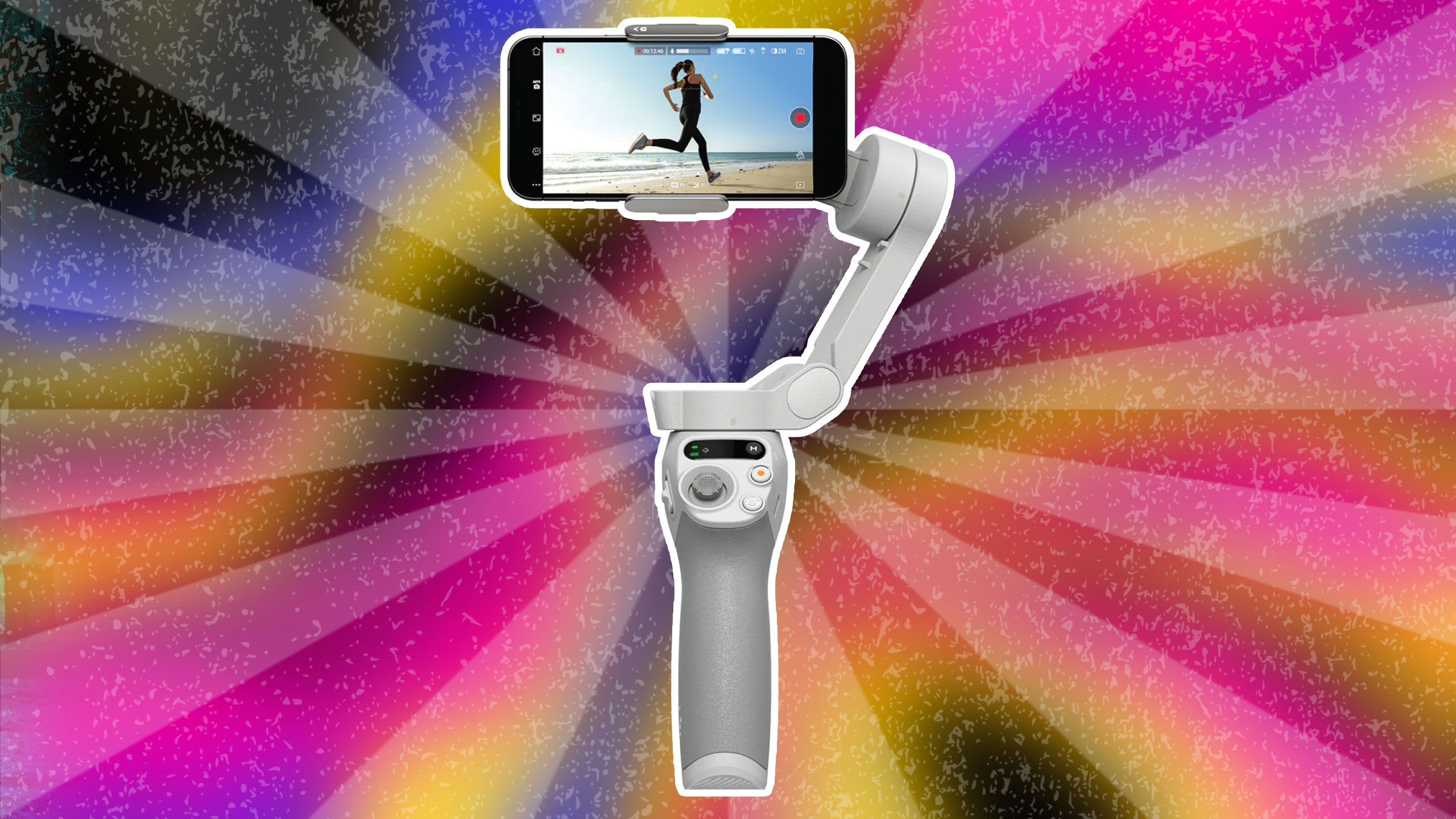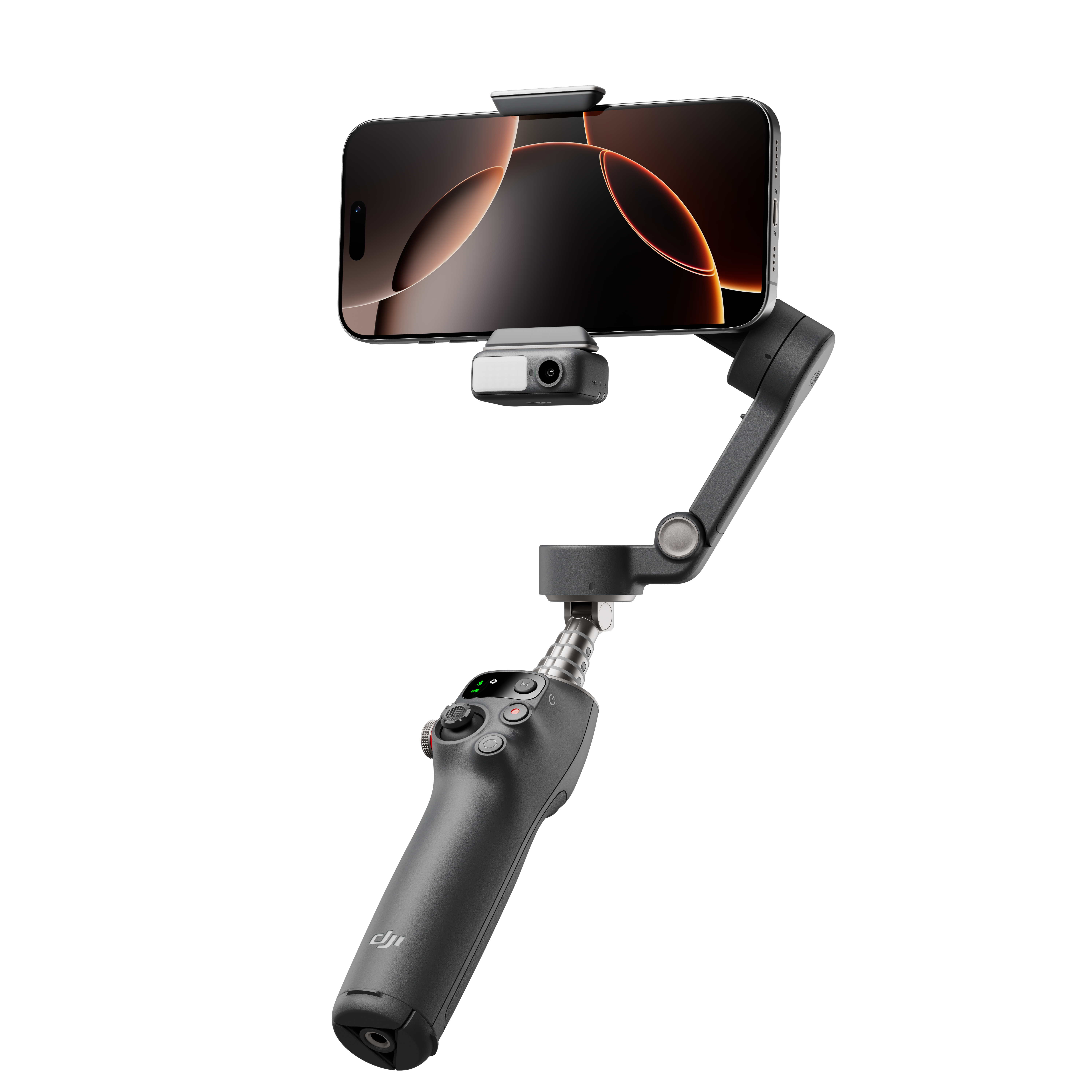DJI has made some of our favorite smartphone gimbals in recent memory, and earlier this year, the company unveiled the latest iteration, comprising the Osmo Mobile 7 and 7 Pro. Having used last year’s Osmo Mobile 6 with great satisfaction, I was intrigued by the value proposition of the $150 Osmo Mobile 7 Pro (OM7P), which is the only one compatible with the new accessory DJI calls the Multifunctional Module.
Moreover, the more affordable Osmo Mobile 7 (OM7) retails for $90, below last year’s $140 base model pricing. Should you upgrade from last year’s products, especially the $228 Vlog Combo? Would waiting for the prices to drop on those be wiser? I took the OM7P and its new Multifunctional Module for a spin along with DJI’s Mic Mini to see if it is a logical upgrade from the Osmo Mobile 6, even in the most demanding situations.
Read our review
DJI’s Osmo Mobile 6 could be the perfect smartphone gimbal
Pocketable and powerful
What is new with the Osmo Mobile 7 Pro?
A refined design and smarter software
Osmo Mobile 7P box contents and the Mic Mini combo
The OM7P feels similar to the Osmo Mobile 6 in my hand. However, reaching for the twist lock to unfold it reveals that DJI changed the locking mechanism to rely solely on the hinge. I can see why. The hinge is stiff, and the compactness makes the likelihood of accidental unfolding slim to none. However, a small nub on the arm sits into the handle when folded correctly, exposing the metallic faceplate of the uppermost stabilizer motor. I wouldn’t be worried about it, but it has four contact points for pogo pins prone to damage, which are essential for operating the Multifunctional Module and passthrough charging features.
When unfolded, the in-hand grip and feel are nearly identical to the OM6, and the untrained eye may not be able to tell the OM7P apart. Both models are similar in weight, but the biggest design improvement ought to be the integrated tripod legs. They slide out of the OM7P handle, and you still have the ¼-inch thread to secure the gimbal to a proper tripod.
This eliminates the need for a screw-in tripod accessory like the OM6, even though that doubles as a grip extension. The integrated pod legs are smaller, and I feel the gimbal is unsteady on its feet when fully extended like a selfie stick. There isn’t a lanyard hole with the new design, but it’s amazing how DJI retained the impressive battery life despite the reduction in internal volume. I won’t miss the separate tripod when I travel with the OM7P.
The Osmo Mobile 7’s integrated tripod is much smaller
Speaking of extension, the reach on both models is comparable, and there’s no advantage to the new one. If anything, it feels a tad smoother out of the box. Most controls and modes have been carried over from the OM6, but you’ll notice an abundance of Pogo Pins on the OM7P (four on the gimbal and eight on the phone mount clip where it connects to the Multifunctional Module). This is a great alternative to rigid connections and cables, but would need careful handling, especially if you run into problems with wireless earbuds not charging in the case because they use the same style of connectors.
Both gimbals side by side, collapsed and fully extended
The phone clip padding has been modified, and I’m happy to report there was zero interference with the buttons along the phone’s sides this time.

Related
9 essential accessories to unlock your phone’s full potential
A little add-on can unlock so much potential
ActiveTrack 7.0 makes subtle improvements
DJI has practically perfected the subject tracking systems we tested on the OM6, but updating the MiMo app for the OM7P reveals you now have ActiveTrack 7, which packs a few subtle improvements. If you shoot crowded scenes involving multiple subjects, like a family vacation vlog, the new tech automatically detects the multiple faces in your frame and allows you to choose which one to track on the fly using the gimbal controls. By default, the app tracks the most prominent face in the frame.
I also noticed an improvement in tracking performance when recording fast-moving dogs, or locking the gimbal on fixed objects. Filmmakers will love how easy this makes B-roll recording for product shoots, as will anyone with a pet. Moreover, the OM7P doesn’t lose the tracking lock when you zoom in, even when switching between camera lenses on your smartphone.
Other MiMo app features we loved, like shot recommendations and one-tap editing presets with shot guides, are still available for anyone seeking creative inspiration or guidance.
The Multifunctional Module unlocks the Osmo Mobile 7 Pro’s true potential
A tiny little elephant in the room
DJI’s Multifunctional Module paired to a Mic Mini
My biggest grievance with the OM6 was that I was locked to the MiMo app for recording and photography, especially if I needed the subject tracking chops. This is where the new Multifunctional Module comes in. Despite its small size, it clips on beside your phone and handles tracking duties no matter which app you use. It also doubles as a receiver for a pair of DJI Mic Minis, and has a tiny but well-diffused fill light.
While the fill light is great for illuminating selfie-style shots at arm’s length, it doesn’t assist the rear-facing camera much. Using the Multifunctional Module for audio recording is particularly great if you’re a live streamer or looking for a simple Apple Continuity Camera replacement without investing in Apple or an expensive webcam. This is especially true in noisy environments where your smartphone mic may struggle as you move away from it. However, a lavalier mic like the Mic Mini performs reliably with noise suppression. I loved how I could use the pairing button on any connected mic as a remote physical shutter button, saving me the time of editing out the gesture to stop recording.
DJI’s Mic Mini kit is great for audio recording
Even if you don’t have the Mic Mini, the Multifunctional Module can be a useful accessory when shooting in tricky lighting that typically throws off smartphone cameras, such as silhouettes and high-contrast lighting. This is where I’ve wished for the subject tracking capabilities of the DJI MiMo app paired with manual controls found in our favorite camera apps. The Module allows you this freedom, and can be liberating for filmmakers and other creatives. In my case, I use this to fall back on the wonderful color accuracy of the Pixel Camera app on my Pixel 7 for recording.

Related
7 image-editing apps for next-level smartphone photography
Find the best editing app for your smartphone photography needs
If you use the DJI app, you can choose whether the app tracks the subject or offloads that duty to the module. The app tracks subjects by default even if the module is connected. This shouldn’t be the case since the module lacks a battery to accidentally track the incorrect subject when connected to the gimbal, and the physical connection is a deliberate action.
The Multifunctional Module uses three main gestures to track subjects and interact with the active camera app via Bluetooth. If you show the module your palm, it enables or disables tracking. To reframe the shot and let the subject move without the gimbal following along, show the double-L gesture. Lastly, the Peace sign holding two fingers up operates the camera app shutter button in video and photo modes. Still, you’ll rely on the app to track pets and objects because the module can only manage faces.
The design has detriments
While the design is great and uses pogo pins for quick disconnection, you must be intentional about the direction the module faces. That’s because the momentary loss of power when you flip it around is sufficient to trigger Bluetooth reconnection with your device, which can be time-consuming. It would have helped if DJI added a small standby battery to the Multifunctional Module so that momentary detachment from the gimbal maintains connection with paired smartphones and Mic Mini transmitters.
Moreover, handling the module after prolonged use is dangerous because it gets warm to the touch even if primary heat sources like the fill light aren’t used. To its credit, DJI includes a warning label, but it is easily lost.
Even though an integrated battery is missing, the pogo pins on the Module enable passthrough charging through the audio recording cable. It allows you to bolster the connected smartphone’s battery with a charge from the gimbal battery. DJI’s tutorial video recommends plugging the gimbal into a power bank, making this a great setup for day-long timelapses. That is, if your phone can keep up and not overheat. As great as that might be, the L-shaped connectors on this short cable render the lock switch on the Multifunctional Module inaccessible in most cases.
Should you get the DJI Osmo Mobile 7 Pro?
What if you have the OM6 already?
I see immense value in the 7 Pro because the Multifunctional Module unshackles you from DJI’s MiMo app. However, that app still tracks a wider range of subjects than the Module, so you can stick with the older Osmo Mobile 6 if you shoot pets and objects rather than people. I recommend the same if your applications benefit from the grip extension and sturdiness of the OM6’s large tripod legs, such as recording selfie video or shooting in windy locations.
On the flip side, the OM7P is the perfect upgrade if you prefer the simplicity of fewer detachable accessories and value the compactness of the integrated tripod. If your use cases benefit from a separate camera app, the tracking chops of the Multifunctional Module make sense, even if you have a dedicated audio setup that works reliably. However, the value proposition of the OM7 Pro peaks for users who prefer recording audio on-location instead of adding voice-overs in post.
With the same solid foundation of simple and reliable controls, robust construction, and an unparalleled ease of use, the DJI Osmo Mobile 7 Pro is a great starter gimbal for frequent travelers, vloggers, and content creators. However, if you have last year’s model, we suggest revisiting the capabilities the Multifunctional Module adds, and evaluating their applicability to your usage before upgrading.

DJI Osmo Mobile 7 Series
The Osmo Mobile 7 Pro brings unmatched convenience and improvements desired in last year’s model. The combination of features and the unmistakable design improvements make it hard to pass up the $150 offer price.
